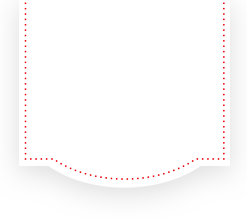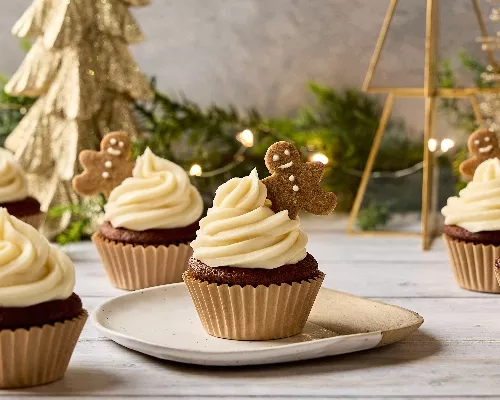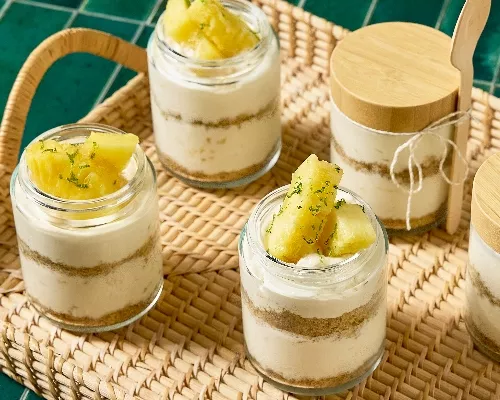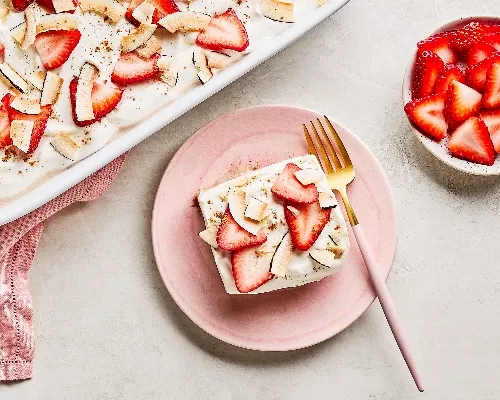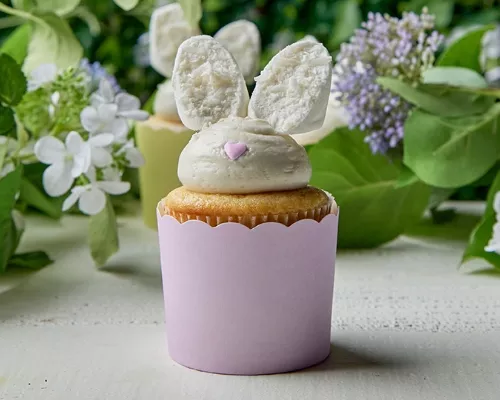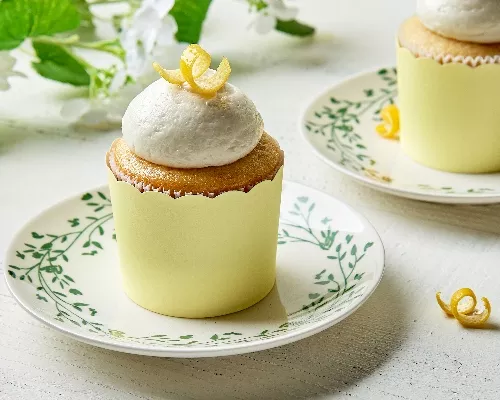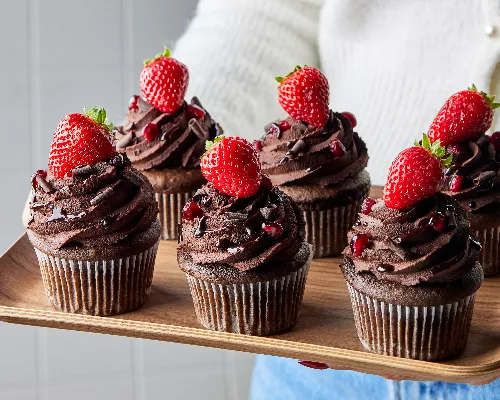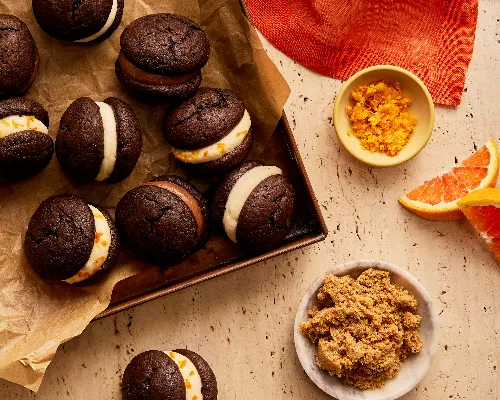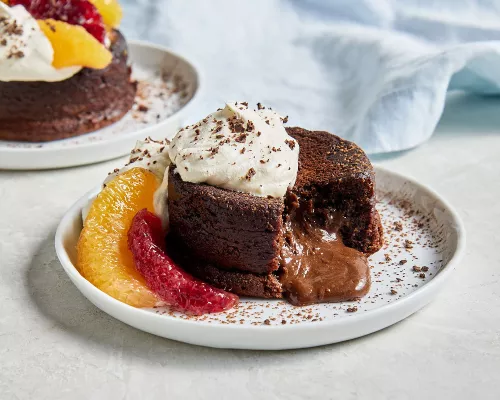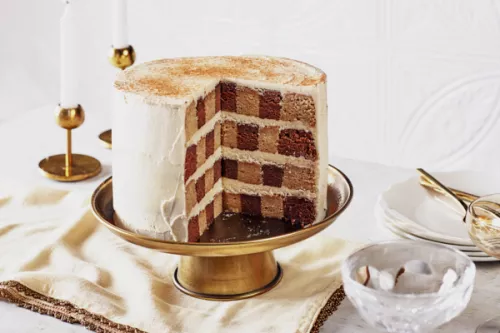Step 1
With a knife, gently scrape or remove the crusts from the top and sides of the completely cooled cake. This step may not be necessary, especially if using cake scraps.
Step 2
In the bowl of a food processor fitted with the metal blade, break or cut the cake into pieces (see Chef’s Tips). Pulse several times while occasionally scraping and moving the cake pieces around the bowl to ensure an even crumb is formed and there are no large pieces left. The crumbs should be quite fine; there should be about 6 cups of cake crumbs.
Step 3
Transfer the crumbs into a medium bowl.
Step 1
In a medium bowl using a hand mixer, cream the cubed, cream cheese until smooth and creamy, scraping down the bowl as necessary.
Step 2
Add in butter and blend until fully incorporated.
Step 3
Sift in the Redpath® Icing Sugar and salt. On low speed, beat the cream cheese mixture and the icing sugar until just combined.
Step 4
Mix in the vanilla extract.
Step 1
Add ½ cup (8 tablespoons) of the frosting into the bowl of cake crumbs. With a rubber spatula or clean hands, work the frosting into the crumbs until evenly distributed.
Step 2
Test the dough. Take about a tablespoon of dough in the palm of your hand and form it into a ball. If the cake begins to crumble, add an additional 1 to 2 tablespoons of the frosting. The cake should just be moistened enough to hold its shape; the rolled ball should be firm enough that when gently pressed, it is not easily squashed.
Step 3
Line a baking sheet with parchment paper. With a small trigger-style ice cream scoop or a tablespoon measuring spoon, portion and roll the dough into balls (see Chef’s Tips) and place onto the prepared baking sheet. Place into the fridge to chill; at least 2 hours.
Step 4
Remove from fridge and gently reroll the completely chilled balls to smooth and reshape them from any lumps. Place back into the fridge to firm up.
Step 1
If using multiple colours, place each colour of candy melts into a separate heatproof bowl. Place a heavy-bottomed saucepan filled with 1 to 2 inches of water over medium heat (ensure the pot is big enough for the bowl to sit on top of the pot but small enough so that the bottom of the bowl does not touch the surface of the water). Bring water to a simmer. Turn off heat and place the bowl of candy melts over the hot water. With a heatproof spatula, stir until candy melts are 95% melted.
Step 2
Carefully remove from the pot, wipe the condensation off the bottom of the bowl with a towel, and stir until the residual heat melts the remaining candy. This prevents the candy melts from overheating and eventually seizing. If using multiple colours, repeat process with the remaining bowls of candy melts.
Step 3
Transfer the coating into narrow glasses (e.g. small liquid measuring cups) or smaller bowls to ensure coating is more than an inch deep; this will make dipping the cake balls easier.
Step 1
Dip a lollipop stick about ½-inch into the melted coating.
Step 2
Insert stick about halfway into the centre of a chilled cake ball; do not push all the way through. Place back onto the baking sheet (stick sitting straight up). Remove about 3 or 4 balls at a time to ensure balls stay cold and firm. Once all the sticks are in, freeze for 5 minutes to ensure the candy melt has firmed up and balls are cold and firm.
Step 3
Have ready a block of styrofoam, or a large, sturdy, cardboard box with tiny holes spaced about 2 inches apart poked into one surface, and/or several drinking glasses that are about an inch shorter than the lollipop stick used. This is where the cake pops will be set to dry.
Step 4
Remove the cake pops that had the lollipop sticks inserted first, again working with 3 or 4 pops at a time to ensure that the cake pop stays relatively firm. Alternatively, remove the cake pops from the fridge one at a time, if this is the first time making them.
Step 5
Dip the entire cake pop into the coating, making sure the coating covers the part where the candy melt has oozed out from the ball onto the stick, and lift straight up and out; do not let cake pop sit in the coating as the warmth of it may cause the cake ball to fall off the stick. Holding the cake pop at a slight angle over the bowl gently turn the cake pop to allow any excess coating to fall back into the bowl. Gently tap the wrist holding the cake pop onto your other wrist or hand to gently remove any excess (see Chef’s Tips). The coating should completely cover the cake ball. If using sprinkles or any other decorations, decorate the cake balls at this point.
Step 6
Place into the styrofoam block, cardboard box, or drinking glass to set and dry, ensuring cake pops do not touch each other. Let dry; approximately 1 hour.
Step 7
Repeat process with the remaining cake pops.
Step 8
Store completely set cake pops in an airtight container in a single layer lined with a paper towel to absorb any moisture, or in individual clear cellophane bags in the fridge for up to a week.

*The “Rosewater ‘Flowerfetti’ Cake” is a 4-layer cake made from two 8-inch cakes divided into layers. One can make a shorter 2-layer cake (versus the original 4 layers) and use the remaining 8-inch cake and turn them into these cake pops. Also, if making this cake and rosewater is not your favourite, and a more classic flavour is desired, omit rosewater. Add ½ tsp (2 ml) pure almond extract and increase the vanilla extract to 2½ teaspoons (12 ml) and increase the milk content by an additional 3 tablespoons (45 ml).
*For best results, use cake that is at least a day old, as the drier cake has more ability to absorb the frosting. Alternatively, any leftover cake scraps from the freezer and/or from previous bakes can be used. Defrost cake scraps overnight in the fridge before processing.
*To ensure cream cheese and butter are at room temperature, remove from fridge at least an hour before making the frosting. Ensure all ingredients are at room temperature before proceeding with the recipe.
*If a food processor is unavailable, use a stand mixer and paddle attachment to process cake scraps into fine crumbs. Alternatively, if that is unavailable, use a large bowl and crumble cake into small crumbs with clean hands.
*When forming the balls, keep in mind that the larger the ball, the harder it will be for the cake pop to stay on the stick.
*Do not tap the cake pop stick onto the rim or edge of the bowl of candy melts. This may cause the cake pop to fall off the stick.
*Do not dip cake pops into just heated or hot candy melts, as this will likely cause the coating to crack as it cools. Stir and cool down heated candy melts before dipping the chilled cake pops.

